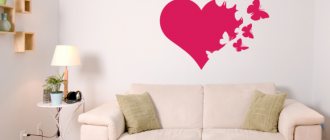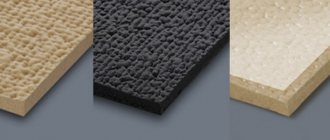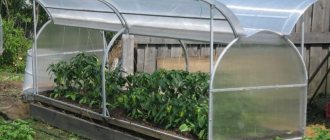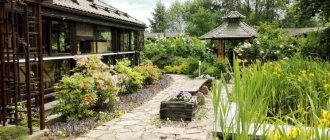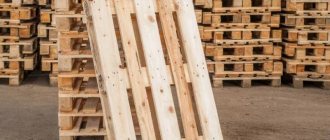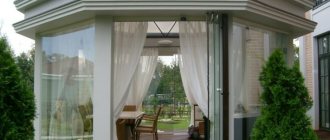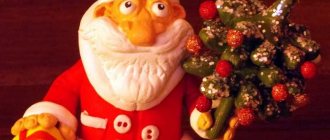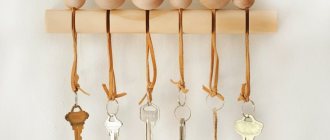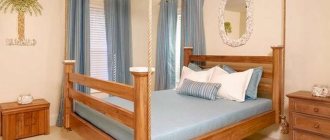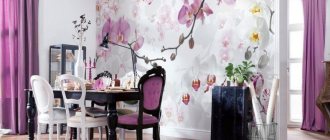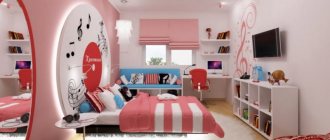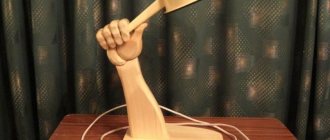Stencil painting: decor basics
A stencil is an outline of a specific figure made from various materials.
Decorative stencil templates allow you to create real paintings. This is not just a drawing in profile, but a figure of an animal in motion or an episode from a fairy tale.
To paint walls, doors and furniture facades, you can use various types of paints, plaster or other finishing material.
Types of stencils by material
The material for making the template can be any. The possibility of reusable or single use, frequency of use and, of course, the cost for the buyer will depend on its density and structural strength.
Today, manufacturers of stencils for wall decor offer templates made from the following materials:
- Paper of sufficient thickness.
- Vinyl records.
- Artistic contours made of PVC.
- Cardboard stencils.
Only the last three models from the presented list are considered reusable templates.
Paper contours, despite their density, do not allow surfaces to be decorated several times. For this reason, such stencils are less expensive.
Where can I get a stencil or how to make it?
A reusable plastic stencil can include entire compositions and is most often used by professionals.
The development of technology and the printing industry makes it possible today to purchase templates in almost any store. The difference in the templates lies in their thickness and material of manufacture. The most common stencils are made from disposable paper or medium-thick plastic.
In addition, the templates differ from each other in the way they are attached to the wall. More expensive (professional) options are attached to the surface using self-adhesive tape, which then easily comes off without leaving streaks or stains on the wall. There are also templates that should be attached to the wall yourself using adhesive tape or tape.
Stencils for the kitchen
The printed stencil should be glued with cardboard and cut along the contour.
The process for making a stencil for the kitchen yourself is extremely simple.
- You need to find a ready-made stencil on the Internet, select the required size (zoom), and then print the finished version. If the drawing is multi-colored, then you need to print the document in color.
- Take a base for the stencil, for example an old folder, cardboard, thick magazine cover, and stick the printed stencil on top of it.
- Cut out stencil voids along the boundary lines. Sand down any ridges or poorly cut edges of the paper.
Besides this, there are other ways in which you can make a stencil yourself. The next one is suitable for people with creative talent.
- You need to take a regular A4 sheet and fold it in half.
- Draw a design on one side and cut it out. It is advisable to use an indent or so-called stencil width of at least 3-5 mm. Then the edges of the finished template must be treated with tape or tape so that they do not blur during painting.
- After this, you need to take a dense backing and fasten it to the base, having first cut out a pattern on the backing.
The finished template can be used for the kitchen only once, since after painting the template will most likely change shape (deform).
In addition, after applying each sketch, it is necessary to wipe the stencil so that it does not leave streaks or streaks.
You may be interested in: Kitchen apron: installation options
Using templates for the kitchen
Small paper stencils can be held with your hands if you work with a small brush.
Required materials and tools:
- prepared drawing;
- material for the substrate (stencil base);
- stationery knife;
- tape or tape;
- marker, pencil, paints;
- glass surface for cutting out a stencil;
- special screen glue;
- brushes;
- paint roller;
- acrylic or spray paint;
- soft sponge for wiping the stencil.
Patterning using patterns is becoming increasingly popular in the design of modern kitchens. The main feature is that they are extremely easy and safe to use. In addition, no special skills or experience are required to perform the work. Most often, templates are used in the kitchen or children's room. The size and type of stencil designs depend solely on the preferences of the owners.
The main thing about using templates is that it needs to be constantly moved from place to place to create a larger image. In addition, you need to know which designs are most often used and used by apartment owners:
Stencils with kitchen utensils and cutlery look incredibly stylish in the kitchen interior.
Flowers. Flowers symbolize new life and fertility. Therefore, they are perfect for the kitchen, as they promote a good appetite. Any other vegetation will also look great against the background of the kitchen.
- A flock of birds, swirling leaves. These drawings create some movement in the room, adding dynamism to its overall appearance.
- Drawings of pets (cats, dogs, parrots). Such drawings complement the overall interior of the kitchen simply wonderfully, giving it more comfort and tranquility.
- Starry sky with the moon. This illustration is usually done on the ceiling and creates a feeling of spaciousness and limitlessness in the kitchen. A well-executed design guarantees a feeling of serenity and mystery in the kitchen.
- Fruits are an excellent solution for choosing a pattern for the kitchen. Fruits, bottles of wine and other still life elements bring a piece of warmth and homeliness to the kitchen. In addition, they promote the production of salivation, which promotes excellent digestion of food.
- Numbers or letters. If there is a small child at home, then such a stencil, in addition to its beauty, will contribute to the development of thinking and memory in the baby. Plus, this is a profitable solution if there are no other options.
- Abstract art is a very popular type of drawing that has been proven to enhance brain activity. The most important thing is not to overdo it with the tones and size of the design, otherwise it will look aggressive and intrusive.
Paper stencils for painting
Most often, stencils are made from thick paper to decorate doors and furniture.
Such contours are presented in the form of beautiful ornaments and figures of small animals. The paper can be easily removed after applying the paint, leaving no marks or smudges.
Note!
Bottle decor - instructions for decorating bottles using different techniques. Types of necessary materials and tools (photo + video)
Furniture decor: TOP-130 photos and videos of furniture decorating ideas. Use of materials and tools. DIY furniture decorating methods
Vase decor - TOP 120 photos and video reviews of vase decor options. Features of technology, choice of materials and tools for decoration
The stores have a huge assortment of paper stencil options, among which each owner will choose a model to suit his taste.
How to get a stencil image
In specialized stores you can purchase ready-to-use stencil images. On the Internet you can find information on where to buy stencil devices for wall decoration. All finished images are made of vinyl.
Since this material is flexible, durable and lightweight. If you have not chosen a ready-made stencil image, then you can go the following ways:
You can order a template from an organization that places advertising posters. They work with special equipment on which it is possible to cut out the required design on the material. Some organizations can help you create a drawing from an existing photograph.
Note!
- Vase decor - the best ideas and step-by-step description of DIY decoration. 125 photos of examples of stylish and modern decorative vases
- Ceiling decor: the best ideas, options and methods for decorating modern ceiling structures
- Kitchen decor - 90 photos of ideas on how to decorate a kitchen in a simple and original way with your own hands
Make it yourself. Let's look at how to make a stencil device for decoration with your own hands. You can draw an image on the material yourself and cut it out, or you can first print the image and copy it onto the material and then cut it out. It all depends on your drawing ability.
Vinyl record stencils
The next template option for surface decoration is vinyl films.
They have a very thin structure, under which paint can flow during the painting process. Therefore, it is better to carry out the work of decorating the walls together with an assistant who will press the stencil tightly against the underlying surface.
In addition, during use, do not forget to clean the vinyl from dried paint.
Today in stores you can find a wide variety of models of stencil patterns, figures and ornaments, but they are distinguished by a sufficient cost.
Note!
- Table decor - preparation of the table surface, choice of decoration technology. Features of using materials for table decoration (photo + video)
- Wooden decor: TOP-140 photos and videos of wooden decor ideas for the home. Decoration of floors, walls and ceilings with wood, options for decorative elements
- Wall decor: types of wall decor, rules for wall decoration. Features of the decor of different rooms and styles. 160 photos + video master classes
Materials for making stencil images
Templates for application are divided into those that can be used once and for repeated use. Depending on the purpose, the materials used can be completely different.
On the Internet you can see many photos of stencils for decoration made from various materials.
The material for disposable stencils in most cases is paper. The paper should be thick in thickness. It can be either white or any other color.
The following materials can be used for making reusable stencils:
Vinyl film. It can vary in density. Both transparent and colored film types are used. It is easy to use as the surface is smooth and the paint adheres easily to the surface.But drawing requires work skills, as you can easily ruin the drawing or the adjacent wall. Over time, such a template must be cleaned of paint.
Polyvinyl chloride film, it has a thickness of several millimeters. In most cases, it is used when it is necessary to apply a design using plaster.
It is applied to the holes of the template and after hardening the sheet is removed and cleaned. This way you get a beautiful drawing.
Sheets of cardboard. This material is used to make stencil cardboard for DIY decoration. Cardboard is the best material for working with stencils yourself. It is easy to cut and easy to apply any design to.
Note!
Apartment decor - the best ideas for stylish and original apartment decoration with your own hands (100 photos)
- Living room decor - design ideas and video tips on how to decorate a stylish and modern living room (90 photos)
Cake decor: do-it-yourself design options at home. 120 photos, recipes and cooking features
Their PVC stencils
Unlike the previous model, the PVC plate is several millimeters thick. Despite the sufficient density, the template has a certain flexibility.
During the decorating process, virtually no paint gets under the plate, which ensures reliable and high-quality painting.
This contour product model is perfect for creating a three-dimensional plaster pattern on the wall.
What you need to know about stencils
Painting a picture on the wall is not such a new tradition. Just remember the rock paintings - even then our ancestors sought to decorate their homes with paintings.
The main task of the stencil is to create a repeating motif. The template is cut from paint-resistant material. The design can be floral, contain letters or animal figures.
The drawings look especially bright in a contrasting interior
Types of templates
Based on the nature of their use, stencils for wall painting are divided into disposable and reusable. The first ones are cut from thin material and are used for multi-component compositions. The latter are made from hard, durable materials and are used repeatedly.
A professional stencil can be made on a roller
For your information! It is important that the drawing fits organically into the interior design. If this is your first experience, it is better to focus on a large, simple ornament. An abundance of small details will complicate the task; in addition, a drawing that is too small will be difficult to perceive.
Cardboard stencils for decoration
Cardboard is also used to decorate wall panels, bathroom decoration and furniture facades.
The density of the cardboard allows you to apply any paint designs along the contour. In some cases, the paint dries and gives the cardboard additional strength.
Note!
- Door decor: TOP-170 photos and videos of door decorating ideas. Selection of equipment, materials and tools. Preparing the surface for decoration
Ceiling decor: TOP-160 photos and videos of ceiling decor ideas. Necessary materials and tools. Reviews of Core Technologies
Ideas for decor: TOP-200 photos and videos of interior decorating ideas. advantages and requirements for decor. DIY Decor Instructions
There are also stencils made of polyethylene foam, which allow you to work with plaster and other materials for three-dimensional crafts.
You can make such stencils for decoration with your own hands, using ready-made diagrams and a sharp stationery knife.
Where to place the image
Once you have chosen an ornament or design, you need to decide where in the room to place it. Don't get carried away and apply it to all surfaces. The result will be disastrous.
For decoration, you should choose only a part of the wall or a corner free from furniture
Advice! Often, a stencil image is applied not so much for beauty, but rather to hide a coating defect. For example, if a child painted wallpaper after a recent renovation. In order not to re-glue the entire wall, you can apply a stencil pattern to the damaged area.
If the purpose of the image is to decorate the surface, it is worth thinking through the future plot to the smallest detail. You can prepare unique stencils (templates) for decoration with your own hands.
For example, in the bedroom above the bed you can put an image of birds or butterflies.
The inclusion of furniture in the composition is considered especially chic.
The template is easy to make with your own hands, but before work you need to take into account several important points:
- the image should be clear and neat; too many lines will overload the wall;
- each room should have its own pattern, harmoniously combined with the interior;
- the details of the drawing should not be very small, tiny strokes will be lost on a large plane;
- the stencil must have lines and bridges for clarity of the drawing;
- the ornament and, especially, the image with figures of animals or other objects should be laconic, you should not get carried away with the abundance of details.
Advice! Before work, take a photo of the wall and draw a sketch of the future image on the photo. This way you can adjust the arrangement of elements and imagine the result in advance.
Related article:
Types of stencils by color and volume
You can decorate the surfaces of walls, furniture and doors not only with paint, but also with gypsum stucco.
To work, you need multi-layered dense templates. The following types of stencils are distinguished:
- Monochrome and polychrome templates.
- Models for flat decorative images.
- Models for creating three-dimensional images.
The choice of stencil depends on the wishes of the apartment owner, the selected pattern and the finishing material used.
Stencil painting
Before applying stencils, it is necessary to prepare the wall surface - it must be smooth and even.
The simplest and most affordable way to paint walls is with stencils. Stencils are convenient because anyone who doesn’t even have any artistic abilities can use them. It should also be noted that stencil painting requires a minimum amount of financial costs.
However, despite the ease of using stencils, it is necessary to first prepare the walls in the kitchen for subsequent painting. The main parameters for wall painting are the smoothness and evenness of the surface. It is necessary to carefully plaster the surface of the walls or use smooth wallpaper as a base, which will perfectly hide all the unevenness and roughness.
Types of stencils
A one-color stencil will help create a calm and unobtrusive pattern.
Before you start working with stencils, you need to decide on the optimal type. There are several types of stencils:
- Single color. Perhaps the easiest DIY stencil for the kitchen, which is done strictly in one color.
- Multicolor. When choosing this type of stencil for the kitchen, a combination of several colors is used, resulting in a multi-colored applique. The important factor here is that the number of colors used for the design requires the same number of stencils. This means that a separate template must be used for each color pattern.
- Volumetric. This type of pattern is made with ordinary plaster, which is also applied using a pre-prepared template. After drying, the three-dimensional picture can be painted in any color to add saturation.
- Anti-stencil. This is another type of stencil that is the reverse of the template. Using paint, it is not the internal pattern of the template that is processed, but its outer side. The result is a silhouette sketch.
You may be interested in: How to wallpaper a kitchen efficiently and beautifully?
Monochrome and polychrome stencils
The image on the wall, door panel or furniture facade may not be made in a single color.
Multi-colored paintings can decorate the walls of a children's playroom, tiles in the bathroom, or an original ornament in the hallway.
For complex multi-component images, you may need several stencils with the same contours.
Templates for three-dimensional drawing
Three-dimensional relief images are applied using plaster, thick acrylic paint or decorative plaster.
To work, you will need to purchase thick cardboard templates or PVC templates that are sufficiently thick. Instructions on how to use stencils for three-dimensional decor will also be useful.
Types of stencils
But the template can be of varying complexity and made on different materials. Let's look at what types of stencils there are.
Plain. The simplest stencil, where the design is applied in one color.
Multicolor stencil. It can be made from several simple patterns and comes in different colors. And if you are just starting to work with stencils, then professionals advise beginners not to use a multi-color template.
Volume. This stencil is made with putty using a spatula. The result is a stylish and velvety pattern with a thickness of one to three millimeters.
Anti-stencil. The difference between this type is that the paint is applied to the outside of the design, creating a glowing effect.
Stencil ideas for decoration
To decorate various rooms in the house, you can choose a huge number of stencils:
For the bathroom, it is better to choose a marine theme: a flat image of dolphins, aquarium fish, and sea creatures.
The largest selection of ideas is presented for a children's bedroom: fairy-tale characters, starry skies, forests and its inhabitants.
To decorate the living room, it is better to use beautiful ornaments, oriental patterns with a glossy texture. Three-dimensional figures made of plaster and decorative plaster would also be an excellent solution.
Photos of various types of decor presented in the practical design magazine will help you choose the right idea. For high-quality decorative finishing, you can use the instructions describing the work for stencils.
